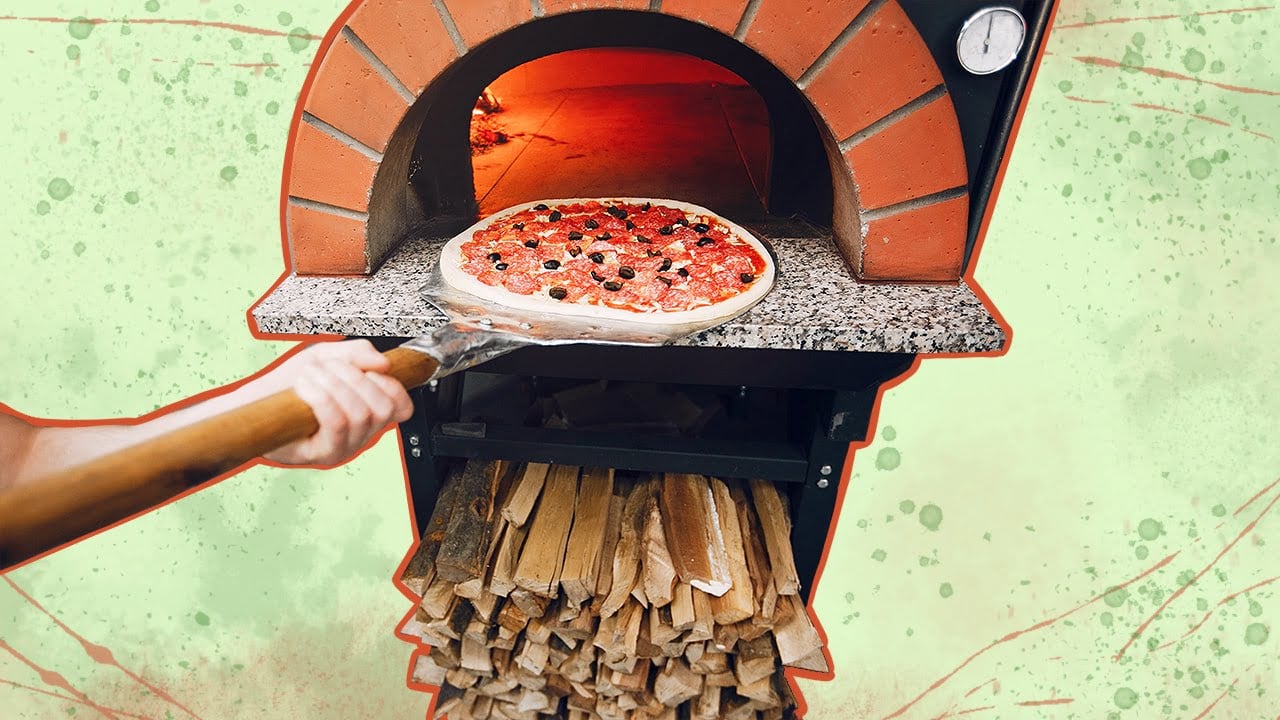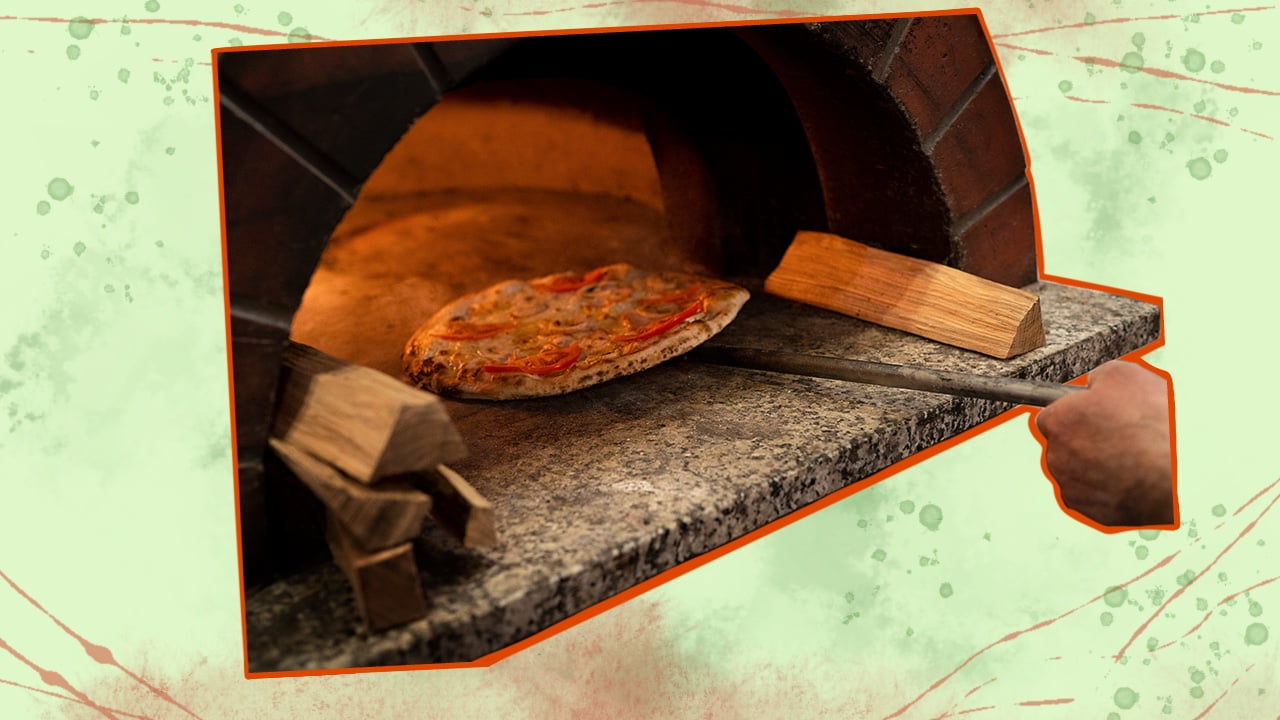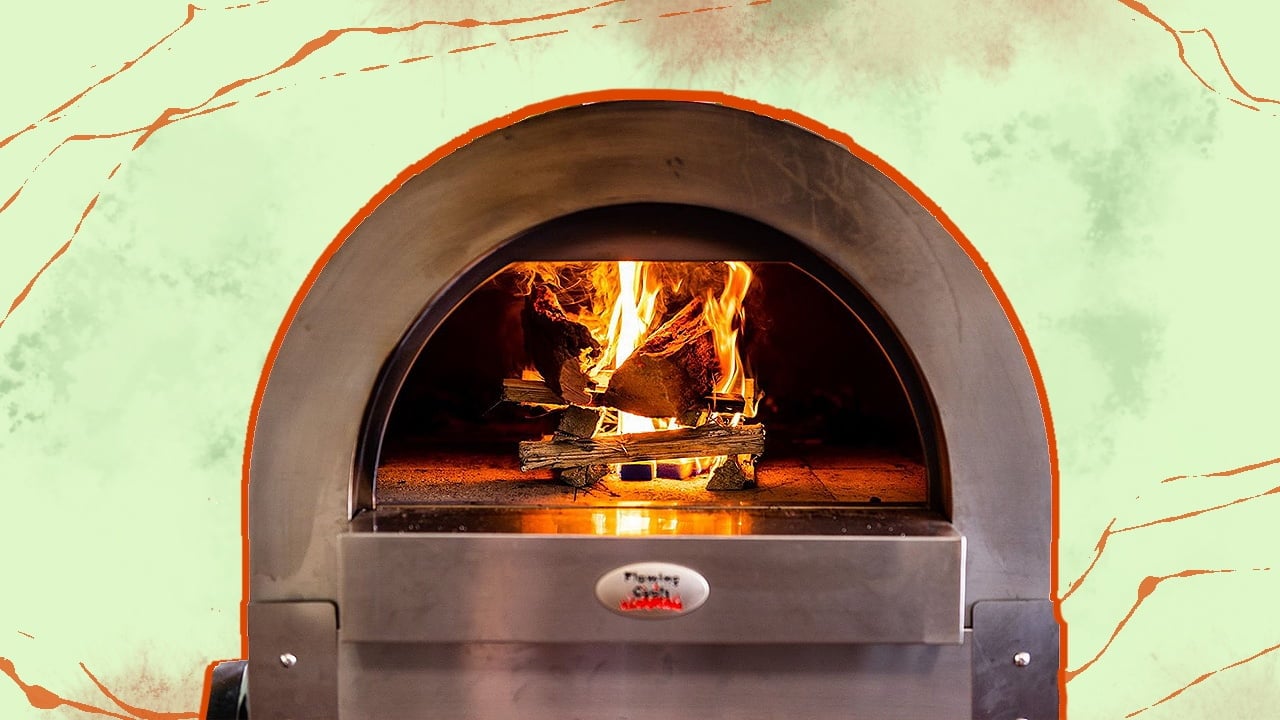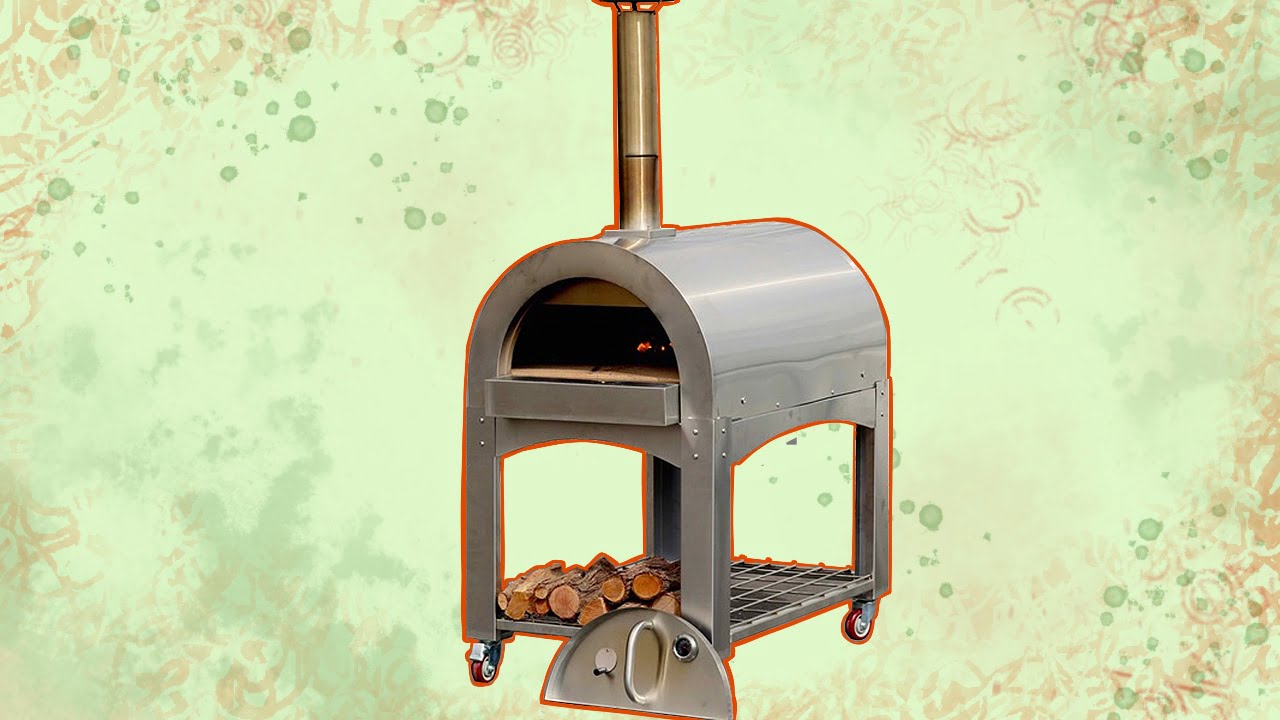Brick Vs Stainless Steel Pizza Oven: Which One Is Better?
One of the most important decisions for first-time pizza oven users is deciding between two common pizza oven types — the traditional brick pizza oven and the modern stainless steel oven. Choosing which is best for you can be difficult because each has advantages and disadvantages. However, personal preference, budget, and available space greatly impact […]

Brick Pizza Oven: A Brief Description

- Made of refractory materials or fireproof bricks
- Recognizable dome shape
- Vent or chimney (above the loading door) to control airflow, expel smoke, and release heat
- Firebrick or ceramic tile flooring
- A front-loading opening with a door for retained heat
- Decorative elements or finishes such as stucco, tile, or mosaic designs
- Superior heat retention
- Authentic pizza flavor
- Durable
- Expensive
- Limited portability
- Requires regular maintenance
Stainless Steel Pizza Oven: A Brief Description

- Made of stainless steel material
- Frequently box-shaped with a selection of sizes and designs
- Insulated with high-temperature materials
- Electric or gas-powered heating elements or afterburners
- Temperature control and timer functions
- Removable trays or racks for easy cleaning
- For mobility, some have wheels or casters.
- Quick heat-up time
- Portability
- Low maintenance
- Uneven heat distribution
- Limited flavor
- Less durable
Brick vs Stainless Steel Pizza Oven: A Side-by-Side Comparison
A stainless steel and brick oven are two common choices for making pizzas, and each has a unique combination of advantages and shortcomings. In this comparison, we will take a closer look at the key features of each type of oven.Convenience
Brick ovens require more time and skill. This includes a pre-heat period, fire management, and cooking temperature monitoring due to brick ovens’ wonderful thermal mass capacity. Meanwhile, stainless steel ovens are easier to use, with quicker pre-heating times and simpler temperature controls.Consistency
Brick ovens have excellent heat retention due to the dense materials used in their construction. This allows for consistent cooking temperatures and crispy crusts. Stainless steels also have good heat retention, but their consistency may not be better because they have thinner walls, unlike brick ovens.Maintenance
A brick oven requires regular maintenance to keep them in good condition — including cleaning out ash and debris and repairing damaged bricks. Stainless steels are easier to maintain, with fewer components to clean and repair.Heating Capabilities
Brick ovens have excellent heat retention. The solid construction material enables them to store heat energy better, which provides consistent cooking pizza oven thermal mass and crunchy crusts. Stainless steel ovens work on heat reflection rather than higher thermal mass like brick ovens do. Thinner walls make for a good heat reflector and electrical conductor of heat. However, they’re not as reliable as many brick ovens — making steel ovens lose heat energy quicker.Price
Brick pizza ovens are typically made from dense materials such as fire brick or refractory concrete. These are more expensive than the stainless steel used to make these modern lines of portable stainless pizza ovens. Stainless steels are generally inexpensive ovens that are easier to install — making them more popular for home chefs and small pizzerias than any brick oven.How to Choose the Right Pizza Oven
There are several considerations when choosing the best pizza oven. To help you get the right one, below are some factors you should keep in mind while shopping:Purpose
Aside from cooking pizza, do you also need the same oven for grilling or roasting? Suppose you plan to use the oven in a commercial setting, such as a pizzeria or restaurant. In that case, you will need an oven that can handle high volumes of semolina pizza and cook them quickly and consistently. On the other hand, if you plan to use the oven at home, you may not need an oven with such high capacity. As such, you may prefer slow-cooking ovens that are more compact and easy to use. You can choose an oven tailored to your needs by identifying your purpose.Place of Assembly
A pizza oven can be installed indoors or outdoors — but most are designed for outdoor use. To place your oven outside, check for outdoor grill station ideas to sustain the oven’s weight. For outdoor installation, common choices include a solid table or a brick or concrete platform. You can even have a pizza base made of other non-combustible materials. When installing a steel or brick oven inside the house, make sure the space is well-ventilated and that the oven is adequately insulated.Technical Factors
A big part of this involves pizza oven material. Pizza oven insulation is used primarily to slow down rapid cooling and allow the oven to maintain high thermal mass. This should also be enough thermal stress for long periods. A high slow cooking temperature can be maintained in an oven with good insulation, resulting in more even cooking and a better pizza taste. A well-insulated oven may also be more energy-efficient, enabling you to reduce your energy costs over time.Fuel Consumption
You can choose an oven that meets your budget and usage by considering its fuel consumption. If you have access to the best wood for your pizza oven, a wood-fired oven might be more economical. But it’s labor-intensive to set up and maintain. On the other hand, a gas or electric oven might be more practical and require less upkeep. However, it might cost more to run over time and might not have the same flavor as a wood-fired oven. Therefore, consider the cost of fuel and any additional expenses, such as installation and maintenance, to better understand the total cost of your purchase.Pizza Oven Size
When purchasing a steel or brick oven, checking the size is crucial because it influences the number of pizzas (and the pizza flours needed) you can cook at once. It also affects the installation space needed. The oven size should be determined by your usage needs — including how many pizzas you intend to cook at once and how frequently you plan to use the oven. Do you intend to hold any sizable events or gatherings? In that case, a larger cooking capacity oven is what you’ll need for a street party’s worth. Or, is it only required for enough hungry mouths, like your family? A small and simple oven might then be adequate.Overall Quality and Cost
By considering the overall quality and cost of a pizza oven, you can find a model that meets your needs and budget without compromising performance or durability. Many less expensive ovens might deliver top-notch outcomes. However, more expensive ones might come with extra features or better materials. A high-quality pizza oven composed of sturdy materials can endure for years while delivering consistent and dependable performance. Meanwhile, a lower-quality oven may malfunction or need frequent repairs.Brick Vs Stainless Steel Pizza Oven FAQs
Still trying to decide which is the best portable pizza oven?
To further assist you in choosing between a steel pizza oven and a brick oven, this FAQs section has you covered with answers to frequently asked questions.
Yes, brick and stainless ovens are safe if properly installed, maintained, and operated.
However, it is crucial to precisely monitor the temperature because high temperatures might cause oven cracking.
It is also important to take precautions when working with these ovens. These include using protective gear, ensuring proper ventilation, and having the oven installed by a professional.
A professional installation can ensure that your outdoor pizza ovens are installed correctly, efficiently, and up to code.
Installing a portable oven can be complex and challenging, requiring expertise in a masonry oven, electrical and gas work, and plumbing.
However, suppose you have the necessary skills, experience, tools (which is more than one construction material), background, and confidence to complete the job safely.
In that case, you may be able to install the portable pizza oven yourself.

